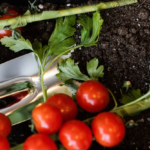Missouri, a state known for its majestic rivers, rolling hills, and rich history, is also a wonderland for gardeners and plant enthusiasts. Understanding the growing zone of Missouri is crucial for any gardener looking to cultivate a flourishing garden. This article dives into the heart of what growing zone Missouri is, offering insights and tips to make your gardening experience in the Show-Me State a resounding success.
The Basics: What Growing Zone is Missouri?
Missouri’s diverse climate places it in the USDA Hardiness Zones 5 through 7. These zones are essential for gardeners to understand as they determine what plants are best suited to thrive in Missouri’s conditions. Let’s break down what growing zone Missouri is, area by area:
| Region | USDA Hardiness Zone | Description |
|---|---|---|
| Northern Missouri | Zone 5 | Primarily comprising the northernmost part of the state. Characterized by colder winters and shorter growing seasons compared to central and southern regions. Average annual minimum winter temperature ranges from -20°F to -10°F (-28.9°C to -23.3°C). Suitable for cold-hardy plants that can withstand frost and freezing temperatures. |
| Central Missouri | Zones 5 and 6 | Central Missouri experiences a blend of Zones 5 and 6. The transition zone between northern and southern Missouri. Average annual minimum winter temperature ranges from -10°F to 0°F (-23.3°C to -17.8°C) in Zone 5, and from 0°F to 10°F (-17.8°C to -12.2°C) in Zone 6. Offers a moderate climate suitable for a wide variety of plants, including both cold-hardy and more tender species. |
| Southern Missouri | Zones 6 and 7 | Southern Missouri is generally categorized as Zone 6, with some areas falling into Zone 7. Warmer winters and longer growing seasons compared to northern and central regions. Average annual minimum winter temperature ranges from 0°F to 10°F (-17.8°C to -12.2°C) in Zone 6, and from 10°F to 20°F (-12.2°C to -6.7°C) in Zone 7. Ideal for cultivating a broader range of plants, including those sensitive to colder temperatures. |
Zone 5: A Cooler Touch
In the northern region of Missouri, Zone 5 prevails with its cooler temperatures, offering a unique set of conditions for gardening and landscaping. Here’s a detailed overview:
Minimum Temperatures
Zone 5 experiences minimum temperatures ranging from -20 to -10°F. These chilly conditions necessitate careful consideration of plant hardiness and frost tolerance.
Planting Tips
Despite the cold, Zone 5 is conducive to the growth of hardy perennials, certain fruit trees, and cool-season vegetables. Here are some plants that thrive in this zone:
- Hardy Perennials: Plants like echinacea, Russian sage, and daylilies are resilient and can withstand the winter cold;
- Fruit Trees: Varieties such as apple, cherry, and pear trees, known for their ability to tolerate colder climates, can flourish in Zone 5 with proper care and protection from frost;
- Cool-Season Vegetables: Crops like kale, spinach, and broccoli thrive in cooler temperatures and can be planted early in the spring or late in the summer for a fall harvest.
Given the colder temperatures, gardeners in Zone 5 should focus on selecting plants that are well-suited to withstand frost and thrive in cooler conditions.
Zone 6: The Temperate Middle Ground
Moving towards central Missouri, Zone 6 offers a temperate middle ground between the colder north and the warmer south. Here’s what you need to know:
Minimum Temperatures
Zone 6 experiences minimum temperatures falling between -10 to 0°F, providing a milder climate compared to Zone 5 but still requiring consideration of frost tolerance.
Planting Suggestions
Zone 6 supports a wider range of plant varieties, making it a versatile zone for gardening enthusiasts. Here are some planting recommendations for Zone 6:
- Perennials: A diverse range of perennials, including hostas, black-eyed Susans, and coneflowers, thrive in Zone 6’s moderate climate;
- Ornamental Trees: Many ornamental trees, such as dogwoods, magnolias, and redbuds, flourish in Zone 6, adding beauty and charm to landscapes;
- Vegetables: With its moderate temperatures, Zone 6 is suitable for growing a variety of vegetables, including tomatoes, peppers, and squash, providing ample opportunities for home gardeners to cultivate their favorite crops.
Gardeners in Zone 6 can enjoy a wide selection of plant options, taking advantage of the zone’s moderate climate to create diverse and vibrant landscapes.
Zone 7: The Warmer South
In southern Missouri, Zone 7 boasts warmer temperatures, offering ideal conditions for a different array of plants. Here’s what you can expect:
Minimum Temperatures
Zone 7 experiences minimum temperatures ranging from 0 to 10°F, providing a relatively mild climate with fewer frost concerns compared to Zones 5 and 6.
Planting Recommendations
Zone 7’s warmer temperatures make it suitable for a variety of plants that thrive in heat and mild winters. Here are some planting recommendations for Zone 7:
- Fruit Trees: Many fruit trees, such as figs, peaches, and citrus trees, flourish in Zone 7’s warm climate, offering gardeners the opportunity to enjoy homegrown fruits;
- Evergreen Plants: Evergreen shrubs like boxwood, juniper, and holly are well-suited to Zone 7, providing year-round greenery and structure to landscapes;
- Heat-Tolerant Vegetables: Vegetables like tomatoes, eggplants, and okra, which require warmer temperatures to thrive, are suitable for cultivation in Zone 7, allowing gardeners to enjoy an extended growing season.
With its warmer temperatures and milder winters, Zone 7 provides an excellent environment for a diverse range of plants, offering gardeners ample opportunities for creativity and experimentation in their gardens.
Maximizing Your Garden in Missouri’s Zones

To make the most of what growing zone Missouri is, consider these gardening tips:
- Seasonal Planting: Adjust planting times based on your specific zone;
- Soil Quality: Missouri’s soil varies; test and amend your soil for best results;
- Watering Needs: Adapt to the rainfall patterns of your area;
- Local Plant Varieties: Opt for plants native to Missouri for greater success.
Conclusion
Understanding what growing zone Missouri is opens a world of possibilities for gardeners. Whether in the cooler climes of Zone 5, the temperate middle of Zone 6, or the warmer southern reaches of Zone 7, Missouri offers a diverse palette for those with a green thumb. Embrace the uniqueness of Missouri’s growing zones and watch your garden come to life in this vibrant and verdant state.
FAQ
Zone 5 in Missouri is great for growing hardy perennials like peonies, daylilies, and some varieties of hydrangeas. Fruit trees such as apples and pears also thrive here.
Yes, in the warmer parts of Zone 7, certain tropical plants can be grown, especially if provided with proper winter protection.
Missouri’s climate varies from north to south, affecting growing seasons, types of plants that thrive, and the need for soil amendments and watering.
Vegetables like tomatoes, peppers, green beans, and cucumbers do well in Zone 6, taking advantage of the longer growing season.











